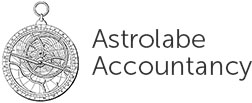A Beginner’s Guide to Cash Flow Forecasting
 Nobody wants their business to fail. Although it’s impossible to predict the future with 100% accuracy, cash flow forecasting is a tool that will help you prepare for different possible scenarios in the future.
Nobody wants their business to fail. Although it’s impossible to predict the future with 100% accuracy, cash flow forecasting is a tool that will help you prepare for different possible scenarios in the future.
In a nutshell, cash flow forecasting involves estimating how much cash will be coming in and out of your business within a certain period and gives you a clearer picture of your business’ financial health.
What is Cash Flow Forecast?
Cash flow forecasting is the process of estimating how much cash you’ll have and ensuring you have sufficient to meet your obligations. By focusing on the revenue you expect to generate and the expenses you need to pay, cash flow forecasting can help you better manage your working capital and plan for various positive or difficult scenarios.
A cash flow forecast is composed of three key elements: beginning cash balance, cash inflows (e.g., cash sales, receivables collections), and cash outflows (e.g., expenses for utilities, rent, loan payments, payroll).
Building Out Cash Flow Scenario Models
It’s always good to create best case, worst-case and moderate financial scenarios. You’ll be able to see the impact of these three scenarios and implement the suitable course of action. You can use the models to predict what needs to happen especially during difficult and uncertain times.
In situations where variables shift quickly such as during a recession, it is highly recommended to review and update your cash flow forecasts regularly on a monthly or even weekly basis. By monitoring your cash flow forecast closely, you’ll be able to identify warning signs such as declining revenue or increasing expenses.
How to Improve the Accuracy of your Cash Flow Forecast
In cash flow forecasting, your estimates are based on historical data. This means having accurate historical data is critical. Below are some tips for improving its accuracy:
- At the end of the week or the month, input the actual amounts of cash that you received and spent. This will allow you to identify which items you got wrong in your estimates and evaluate why you got it wrong. This analysis may lead you to identify bigger issues and help you make adjustments to your assumptions.
- Carefully evaluate all of your assumptions. Just because it’s correct now doesn’t mean it will be true for the future. Go through everything, especially when it comes to sales and validate it.
- Don’t forget to include annual payments, loan payments, credit card debt payments, and estimated taxes.
- It’s almost impossible to forecast where your business is going to be longer than one year out. You’ll introduce more risk and greater uncertainty the further out your financial scenario models go.
Get Expert Help
Whether your business is growing, fighting for survival, or you simply want to run your business better, a cash flow forecast can help you make business-critical decisions that impact the financial health of your business.
You can download a simple monthly cashflow forecast Excel template from the resources section of our website.
To get expert assistance with your cash flow, chat with our team. Book a one-on-one consultation and we’ll work out a plan to help you keep more money in your pocket.
